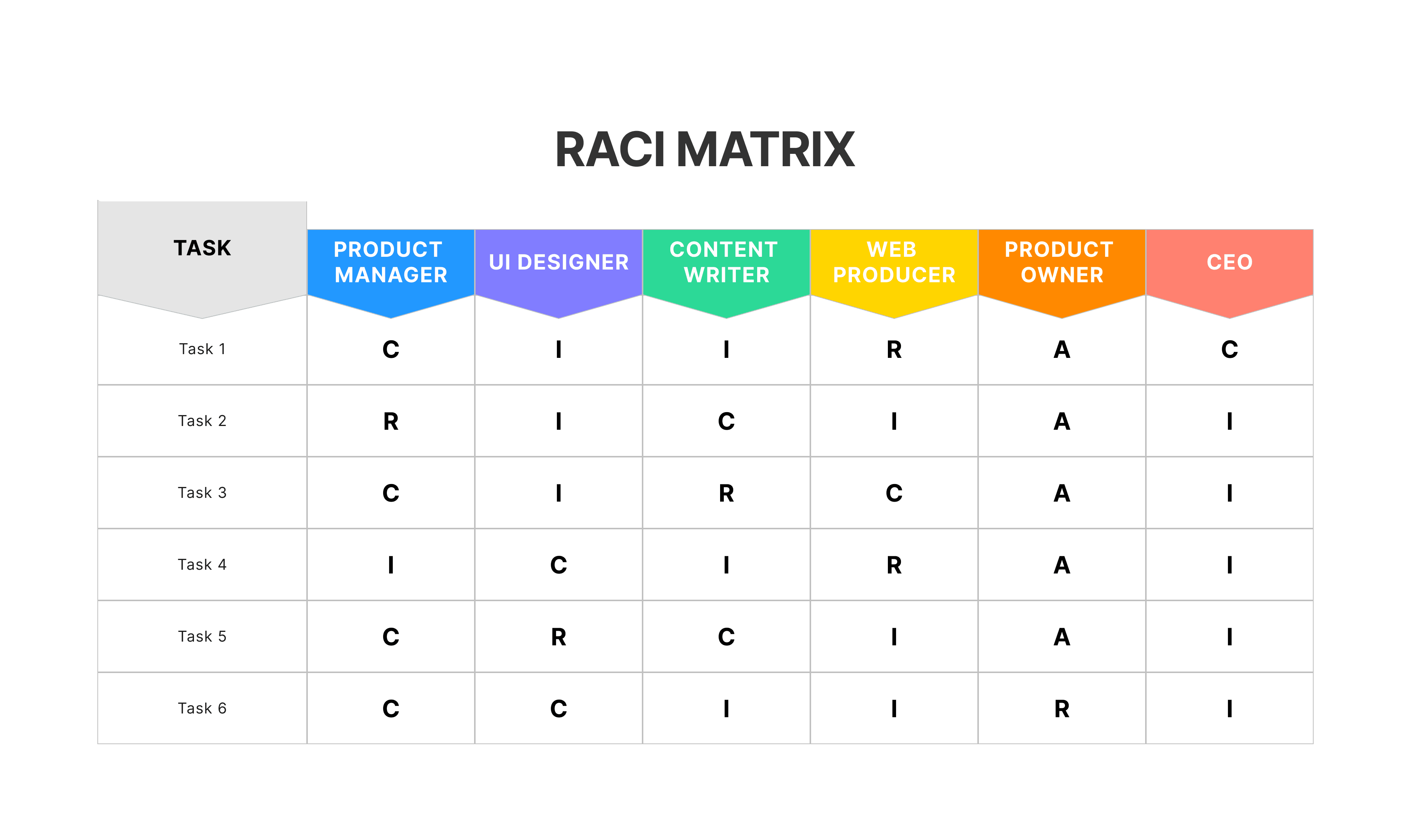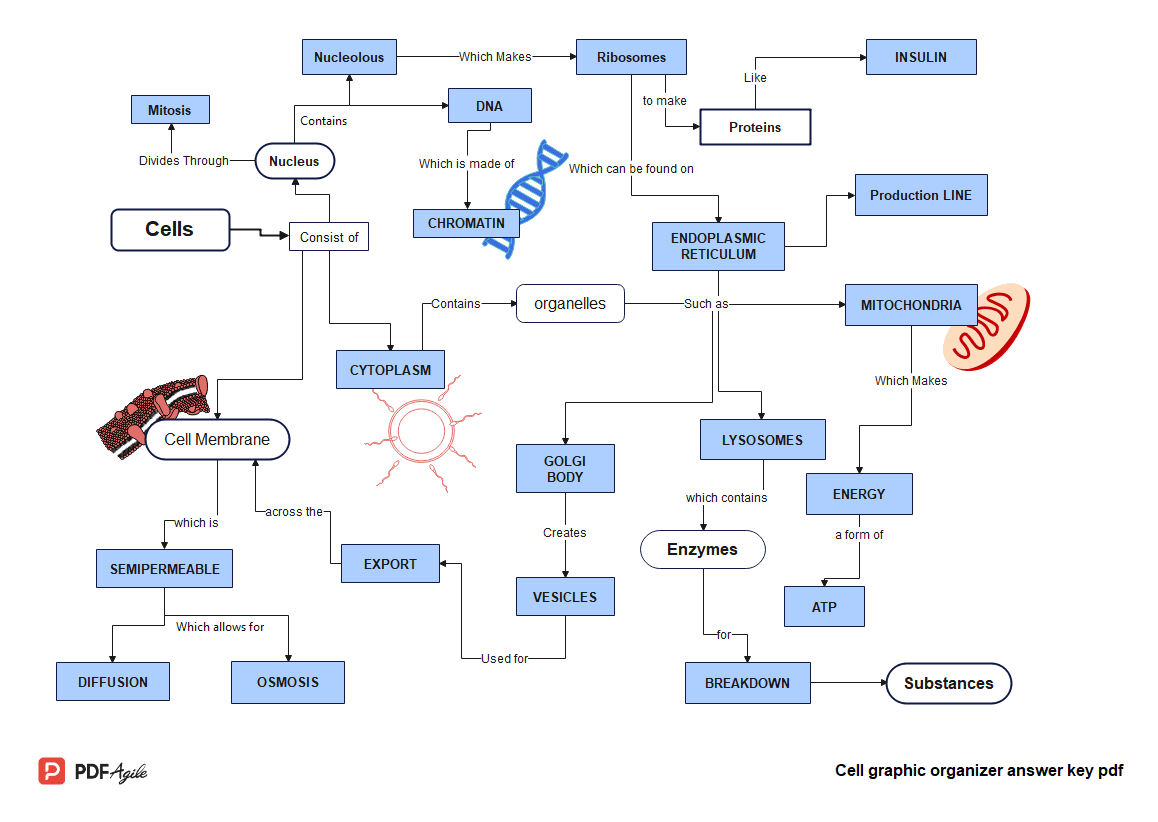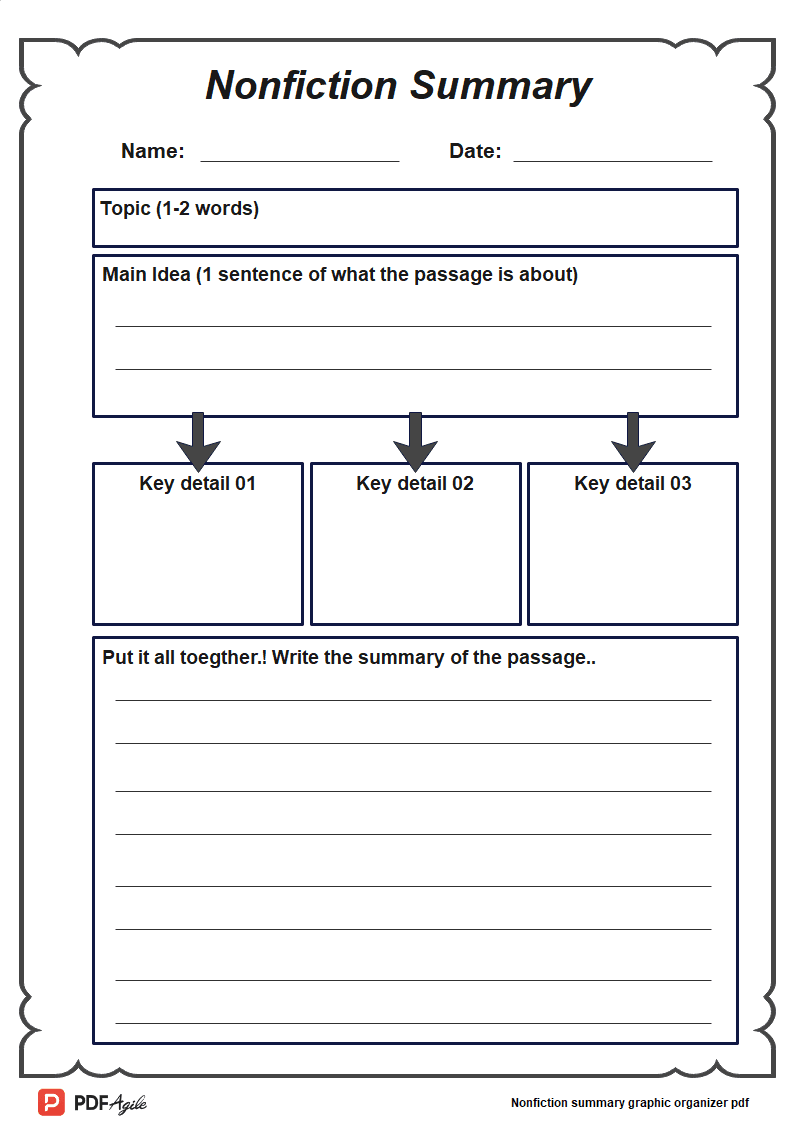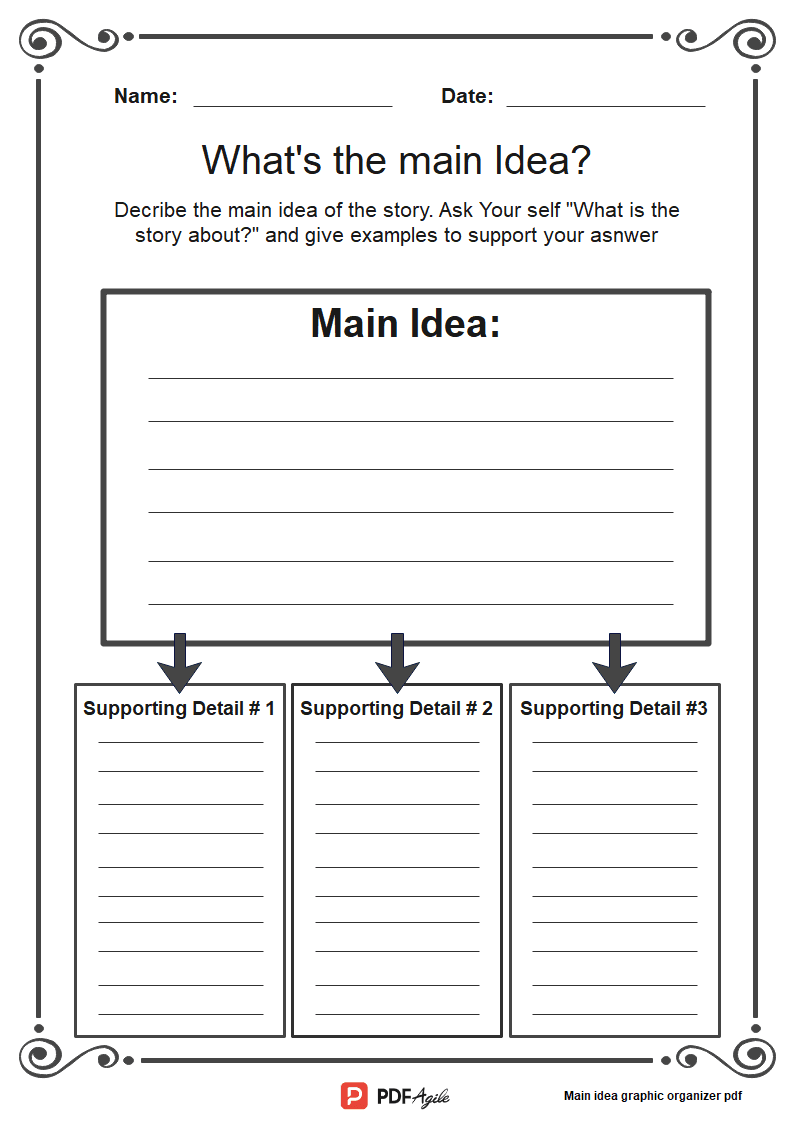Imagine a project where everyone knows exactly what they're responsible for, who needs to provide input, and who needs to stay informed – a symphony of synchronized effort. This ideal can become a reality with the help of a seemingly simple tool: the RACI matrix template. This powerful framework cuts through the noise of complex projects, bringing clarity and structure where it's needed most. Whether you're leading a small team or managing a large-scale initiative, understanding how to use a RACI matrix template is a game-changer. Join us as we explore the ins and outs of this essential project management technique and how it can elevate your team's performance.
What is a RACI Matrix?
The RACI matrix, also known as a responsibility assignment matrix, is a simple yet highly effective visual chart that clarifies the roles and responsibilities of individuals or teams for specific tasks or deliverables within a project or process. The acronym RACI stands for:
R - Responsible: Those who do the work to complete the task. There can be multiple responsible parties for a single task.
A - Accountable: The one individual who is ultimately answerable for the correct and thorough completion of the deliverable or task. Only one person should be accountable for each task. They delegate the work to those responsible.
C - Consulted: Individuals who need to provide input or feedback before the task can be completed or a decision made. This is two-way communication.
I - Informed: Individuals who need to be kept up-to-date on the progress or completion of the task, but do not need to be actively involved in its execution. This is one-way communication.
The Powerful Benefits of Using a RACI Matrix
Implementing a RACI matrix, often using a ready-made template, offers numerous advantages for project teams and organizations:
- Clarity of Roles and Responsibilities: It eliminates ambiguity by clearly defining who is doing what for each task, preventing confusion and overlap.
- Improved Communication: By outlining who needs to be consulted or informed, it ensures the right people are involved at the right stages, fostering effective communication flow.
- Enhanced Accountability: With a designated "Accountable" person for each task, it's clear who is ultimately responsible for its completion, promoting ownership and accountability.
- Reduced Conflicts: Clearly defined roles minimize the potential for conflicts arising from unclear responsibilities or duplicated efforts.
- Streamlined Decision-Making: Knowing who is "Accountable" facilitates faster and more efficient decision-making processes.
- Effective Resource Allocation: It helps identify potential workload imbalances and ensures resources are allocated effectively across the project team.
- Better Stakeholder Management: By identifying who needs to be "Informed," you can keep stakeholders updated on progress, managing expectations and fostering trust.
- Facilitates Onboarding: For new team members, a RACI matrix provides a quick and easy way to understand their roles and responsibilities within a project.
- Supports Organizational Changes: During restructuring or personnel shifts, a RACI chart helps maintain clarity of roles and ensures a smooth transition.
How to Create Your RACI Matrix Using a Template
Creating a RACI matrix is a straightforward process, especially when starting with a template. Here's a step-by-step guide:
1. Identify Project Tasks/Deliverables: Begin by listing all the key tasks, activities, or deliverables required to complete the project. Be as specific as possible, breaking down larger tasks into smaller, manageable steps. You can use project plans, work breakdown structures, or simply brainstorm with your team.
2. List Project Roles/Team Members: Identify all the individuals, teams, or roles involved in the project. This includes everyone from project managers and team members to stakeholders and external contributors.
3. Choose Your Template: Select a RACI matrix template that suits your needs. Look for a template with columns for tasks and rows for roles, or vice versa.
4. Assign RACI Roles: For each task, go through each role and assign the appropriate RACI designation (R, A, C, or I). Ask yourself the following questions for each task and role:
- Who will do the work? (Responsible)
- Who is ultimately answerable for the completion of this task? (Accountable) Remember, there should only be one "A" per task.
- Who needs to provide input or feedback before this task can be completed? (Consulted)
- Who needs to be kept informed about the progress or completion of this task? (Informed)
5. Review and Validate: Once you've filled out the matrix, review it with your team and stakeholders to ensure accuracy and alignment. Discuss any ambiguities or disagreements and make necessary adjustments.
6. Communicate and Implement: Share the finalized RACI matrix with everyone involved in the project. Ensure everyone understands their assigned roles and responsibilities.
7. Maintain and Update: Projects can evolve, so it's crucial to revisit and update the RACI matrix as needed throughout the project lifecycle to reflect any changes in tasks, roles, or responsibilities.
RACI Matrix Example
Here's a practical example of a RACI matrix template in action for a website redesign project, showing how responsibilities are assigned to specific individuals.

This website redesign example demonstrates how a RACI matrix clarifies roles (Responsible, Accountable, Consulted, Informed) for each task and team member, leading to better project organization.
Free Download: RACI Matrix Template
You can download the RACI Matrix Template mentioned above by clicking Use Template button on this page. Customize it to fit your specific needs and preferences.





